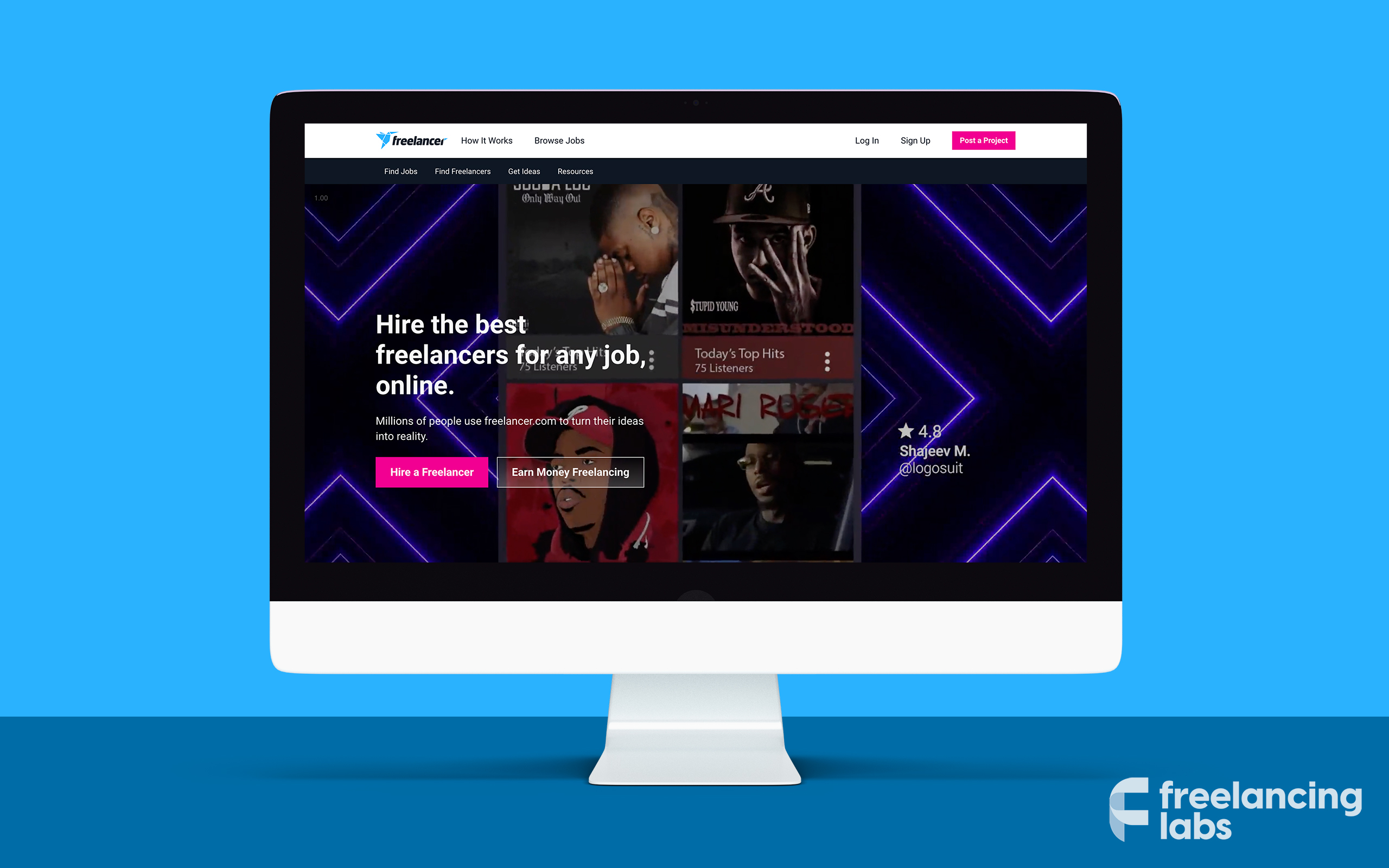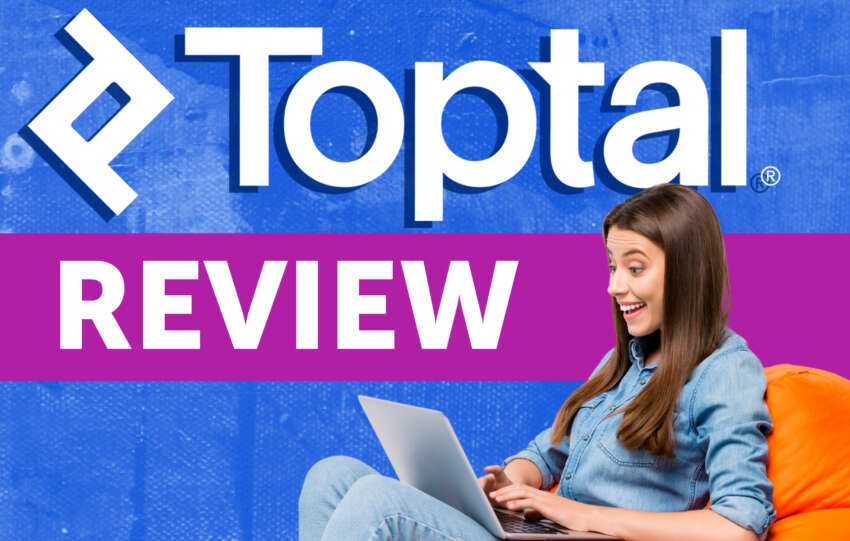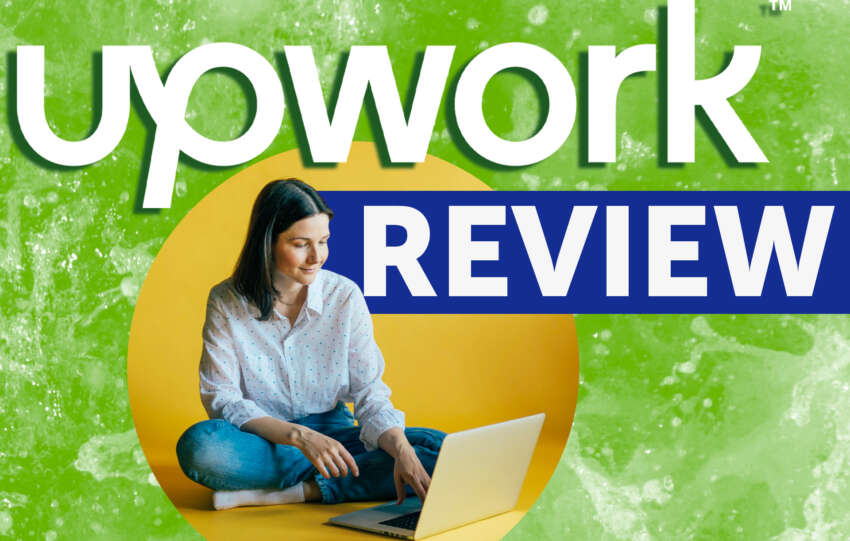
Freelancer Review: Is Freelancer a Legit Way To Find Jobs Online in 2022?
In this Freelancer review, we are going to look at the pros and cons of the Freelancer.com platform, how it works and whether Freelancer is a legit way to find an online job in 2022.
How Freelancer Works
The first step to getting started on Freelancer is to sign up. When you do this, Freelancer will immediately take you to a page where you select your top skills.
- There are 16 different categories, ranging from website design to shipping to legal work.
- After you select your categories, you will connect to another social media account to verify your identity.
- Then you will write a description and set your average hourly rate.
As soon as you verify your email and finish making your account, you can start seeing jobs and bidding on them. The whole process to get set up probably takes about 15 minutes.
Freelancer Review
Description
Freelancer can be a good starting platform for new freelancers. It requires no experience, and you can sign up in minutes. However overall, it isn't the most user-friendly.Positives
- Variety of Categories
- Ease of Browsing Jobs
- Ease of Set Up
Negatives
- Clunky Platform Design
- Limited Number of Jobs You Can Apply To
- Limiting Algorithm
- Bidding System
- Oversaturation of Freelancers
This is a lot more straightforward and less time-consuming than sites like Upwork and Fiverr.’
Creating an account is completely free, so it’s probably worth going and making an account if you are curious about the platform.
Freelancer Review: Pros & Cons
Pros
Variety of Categories
The categories of work on Freelancer are a lot more diverse than platforms like Upwork or Fiverr.
Of course, it has the typical categories you would expect like writing, graphic design and data entry. It also features categories like engineering, health & medicine and product sourcing & manufacturing.
If you are looking to do freelancing in a non-traditional category, Freelancer might be a good option for you.
While there are plentiful platforms for work like graphic design, writing, video production and social media management, it can be hard to come by platforms where you can do things like legal work or architecture.
Ability To Browse Jobs
It is possible to view job postings immediately after creating your account. While many other freelancing platforms enable clients to shop for freelancers, Freelancer operates in the opposite way.
Clients create posts of the kind of work they want to be completed. If you find a posting you like, you can apply for the job.
The fact that freelancer functions more as a job board might be appealing to some people. For example, maybe you don’t have a niche yet and are trying to explore different kinds of freelancing work.
The structure of the platform could make it easier to explore different job types and see the kind of work most clients are looking for.
After you fill out your profile and set up your hourly rate, you will also be featured on their list of freelancers for clients to browse. In that sense, it does allow clients to search for freelancers directly.
However, you can’t post specific jobs you are looking to do (like character illustration or social media content calendars).
You can only give a general description of the type of work that you do and your general hourly rate. Still, if clients like what they see, they can reach out to you and propose a project directly.
Ease Of Set Up
Out of the three platforms reviewed so far, Freelancer is by far the fastest to get set up on.
Due to its simplistic interface, it eliminates a lot of the extra work required to make a competitive profile.
For example, on Fiverr freelancers have to create different “gigs”. For each “gig” you are expected to upload photos, usually an attractive main photo that will attract clients when they are browsing as well as a collection of other photos that will showcase the type of work you typically do. If you go onto Fiverr, you will notice that most gigs feature edited images combining texts, symbols, and photographs.
Creating these images takes time and effort upfront. Freelancer, by contrast, only shows your profile and doesn’t require you to post anything beyond a basic profile picture.
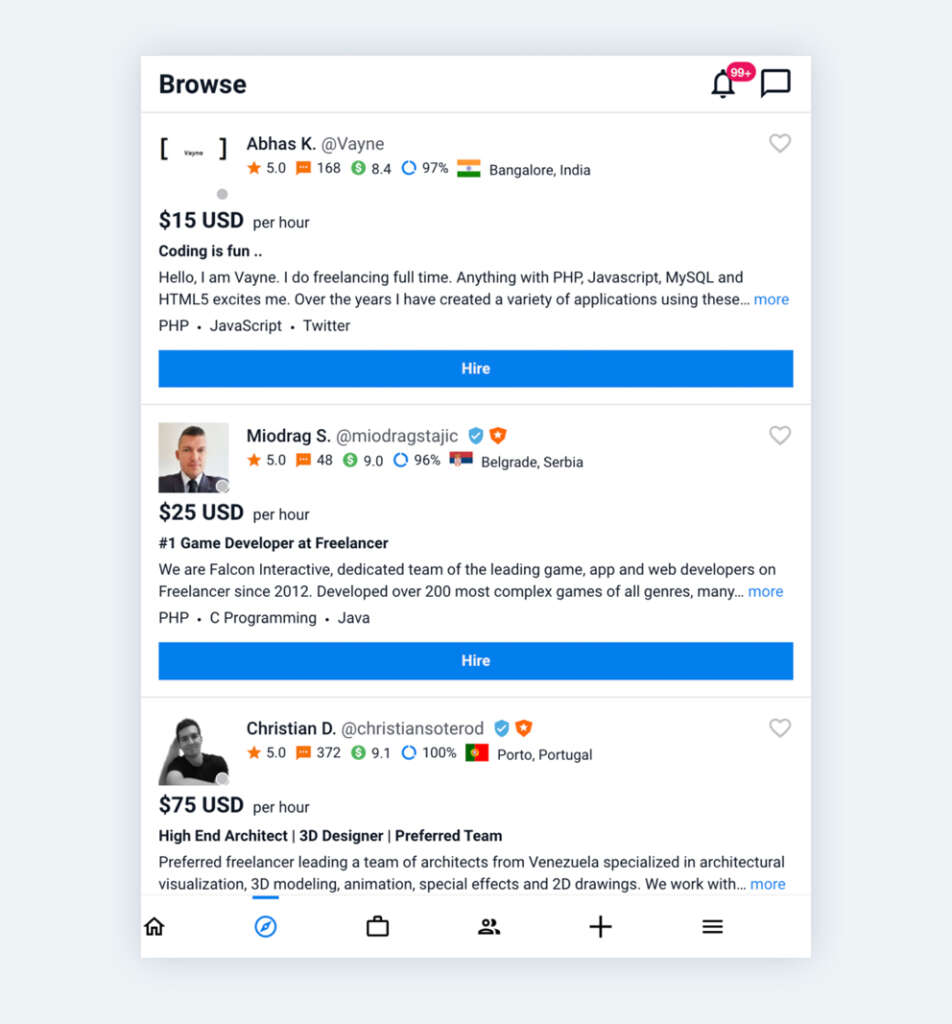
This means that you can get fully set up on the platform in about 30 minutes total. This is a big difference when compared to Fiverr which takes hours of work to create a competitive profile.
Cons
Clunky Platform Design
In many ways, Freelancer feels like a website out of the 2010s. It’s not simply a stylistic problem either: the UI simply isn’t that user-friendly. Their Help/FAQ pages are buried deep in the website which can make it difficult if you need clarification on something.
While we listed the simplicity of the design as a pro, it can also be a con. The lack of images makes it hard to showcase your work or portfolio.
While the platform is straightforward, it can be hard to stand out from the crowd.
Limited Number of Jobs You Can Apply To
With Plus Membership you can apply to 100 jobs per month. 100 might sound like a high number, but in reality that is just about 3 jobs per day. Keep in mind, you aren’t going to get 100% of the jobs you apply to.
Without Plus Membership, you can apply to even less. You get only 6 bids when you create your account. After that, you get new bids after a 5 day waiting period. You can never accumulate more than 6 bids at a time without paying for membership.
Limiting Algorithm
Remember when we said that clients can browse Freelancer’s profiles? Well, the way the site is set up makes it almost impossible for clients to see your profile until you’ve already built up reviews and ratings. This obviously makes it difficult for newcomers looking to break into the platform.
Bidding System
Now, this one is a con for freelancers but might benefit clients looking to hire freelancers. The bidding system of Freelancer is highly competitive. Take a look at this posting for a content writer:
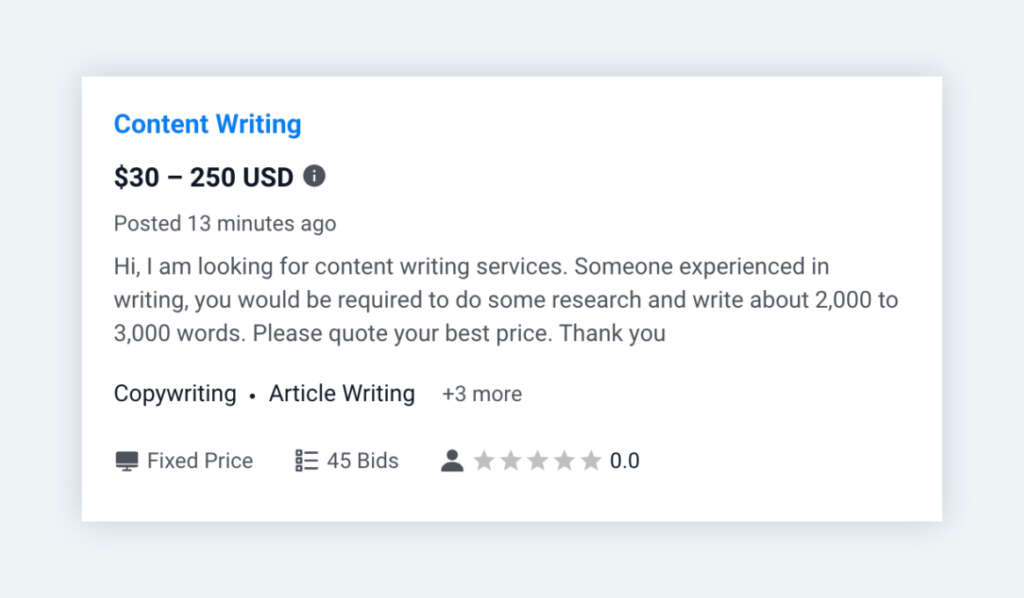
As you can see, within 13 minutes of being posted 45 bids for the project were placed. Not only does this make it difficult to actually win jobs, but it could also result in you pushing down your rate substantially in an effort to compete. This hyper-competitive bidding system creates an environment that is a lot less conducive to profitable and balanced freelancing than many of the other platforms we’ve covered.
Oversaturation of Freelancers
This probably comes in part from the ease of getting set up on the platform. It also is likely due to the lack of vetting. Anyone can sign up for Freelancer and get started right away.
This means that clients are going to have to sift through a lot of options before they get to you.
This problem paired with the bidding process and the algorithm that is based almost entirely on having large amounts of prior work on the platform can make it feel impossible for new freelancers to establish themselves.
Is Freelancer Free?
As we mention above, Freelancer does offer a paid “plus membership” which the platform claims greatly increases your chance at getting jobs. Though we haven’t personally tried out the option, the reality is that there are so many platforms for freelancing it would probably be best to hold off on the paid option until you start pulling in money.
If you do go for their paid service, make sure to track how much your income has increased to determine if it is worth it.
The truth is, Freelancer probably won’t be much use without paying for their membership. Even when you pay, people report it can still be quite difficult to land jobs.
So while Freelancer technically offers a free option, they’ve set up the platform to be almost unusable if you stick to the free option.
Can you get scammed on Freelancer.com?
Unfortunately, there is the potential to get scammed anytime you are exchanging money for goods or services online. As we’ve mentioned in other articles, using a reputable freelancing platform can help mitigate the chances of getting scammed.
How can I avoid getting scammed on Freelancer?
This Freelancer review wouldn’t be complete if we didn’t mention red flags to look out for on the platform:
Asking to communicate off the platform.
Freelancing platforms exist to connect you with clients. Most of them require communication to be done within the platform, and for good reason. If you move communication off the platform and issues arise, it makes it more difficult for the platform to address these issues.
Asking for personal information.
This one should be a no-brainer. Don’t give out any personal information, and if you find a client is asking for an inappropriate or suspicious amount of information from you, reach out to the platform immediately to discuss the issue.
Excessive “test projects”.
Personally, I have never done free test work. It is normal for clients to order a small quantity of work when they first use you and then increase the amount of work once they are confident in your abilities.
However, reputable businesses with sufficient resources will always be willing and able to pay you for your time. If a client wants you to do free work to assess your abilities, it’s probably best to avoid them all together.
Which Is Better: Upwork or Fiverr or Freelancer?
Every platform operates differently and has different pros and cons. We’ve written articles reviewing Upwork and Fiverr individually, and have more comparison articles coming out. If you are looking to compare specific platforms, check out our comparisons page.
Freelancer Review: Bottom Line
Freelancer’s greatest competitive advantage, to be honest, seems to be their domain name and how long they have been around. Other than snagging a great domain, the company hasn’t done much to make itself a competitive option for freelancers.
However, because of the ease of setup, Freelancer could be a great option for market research. If you are getting started, it is essential to understand what kind of clients are out there and what kind of work they are looking for. You can also easily browse through the website’s top earners and study their profiles to figure out what works in your field. If you have the money to spare, it might even be worth paying for a membership for a month to see if you are able to get enough work to make it worth the cost. At the end of the day, diversifying the number of freelancing platforms you work from can be a great way to learn about the market and get access to new clients.
After reading this Freelancer review, don’t worry if Freelancer doesn’t feel like the platform for you. There are many other options out there. If you are wanting to get into freelancing, we encourage you to check out our reviews of Upwork and Fiverr. And we have even more platform reviews coming your way!


